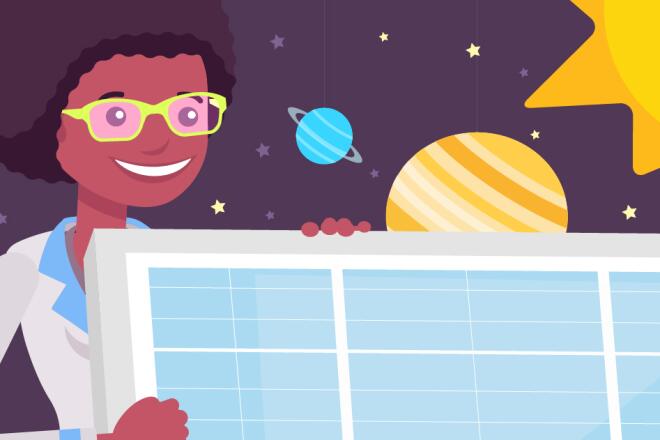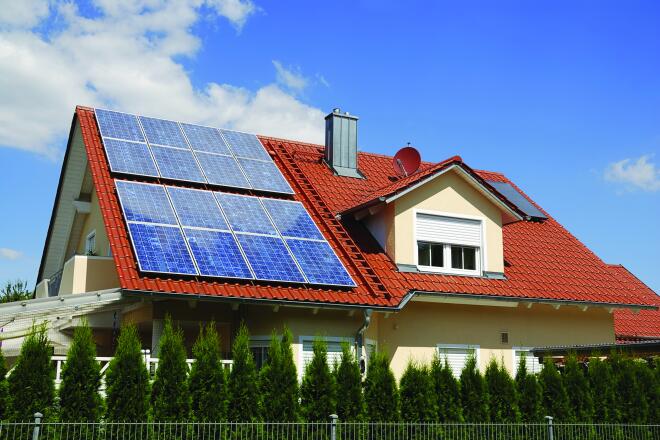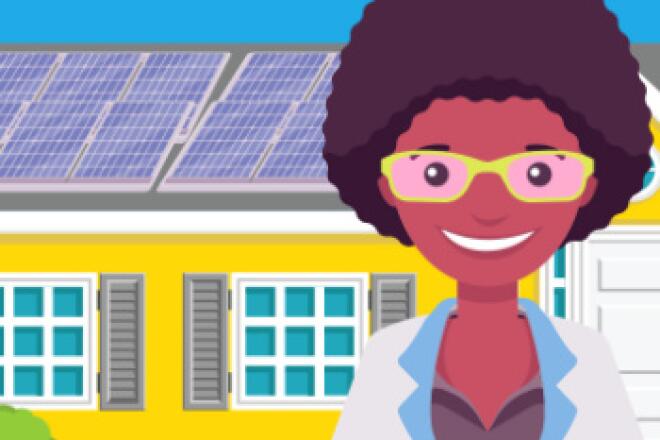
What Distributed Generation and Net Metering Mean for You
The way electricity will be generated and distributed in 10 years will likely be much different than it is today. These changes are made possible by utility investments and government initiatives to modernize the grid, including the American Recovery and Reinvestment Act of 2009. Residential consumers and businesses who generate their own power at or near the point of use, a process known as distributed generation (DG), may be some of the greatest beneficiaries of smart grid technology. DG systems commonly utilize the natural resources available at their location such as the sun or wind. The smart grid helps utilities reliably and efficiently accommodate a greater number of DG system operators than a traditional grid would otherwise be able to handle, thus giving you more choices when it comes to your energy.
 We’ve answered some common questions about DG to help clear up what this means for you:
We’ve answered some common questions about DG to help clear up what this means for you:
How does the smart grid help you if you already have or are interested in adding distributed generation?
Although utilities make the delivery of electricity look simple, it’s not—the amount of electricity being generated must precisely match the amount of electricity being used at any point in time. The smart grid enables utilities to better manage the variability that goes along with integrating all forms of DG, but particularly renewable forms of DG like solar panels dependent on environmental conditions such as the sun shining. Distributed battery storage presents significant advantages over traditional grid infrastructure, especially when used for the mitigation of the variability of solar and other irregular generation sources. However, battery storage is still expensive and high prices are expected to continue to limit its wide-scale availability.
Why would you want to install a DG system?
Several types of benefits may be available to DG system owners depending on their state’s DG regulations. Find your state’s incentives and policies through DSIRE. Some benefits may include:
- Lower electric bills
- Reduced carbon footprint
- Reduced exposure to future electricity price increases
- Possible increased property value
Can you or any DG owner be independent of your utility?
Almost all DG system owners still depend on their local grid and utility. For example, a solar panel owner uses the grid to transmit electricity that is generated in excess of what he or she needs back to the utility at certain times of the day, and to obtain electricity from the utility at night or on cloudy days. Electric service actually consists of three distinct components: the electricity generation itself, transmission lines, and distribution (grid) services to get it where it needs to go. A DG system can reduce your need for utility-provided electricity, but does not reduce the need for transmission and distribution services.
What is net metering?
 Net metering refers to the manner in which a utility calculates the quantity and value of electricity produced by a DG system. In the case of solar panels, the owner avoids buying some utility-provided power because the panels are generating a portion of the owner’s electricity needs. When the solar output is greater than the immediate needs of the house, the excess is sold back to the utility. Because the panels are generating electricity which is not being used in the house — the electricity meter calculates this as a credit. The details of net metering policies vary by state and utility, and can make a significant impact on the economics of a DG system investment.
Net metering refers to the manner in which a utility calculates the quantity and value of electricity produced by a DG system. In the case of solar panels, the owner avoids buying some utility-provided power because the panels are generating a portion of the owner’s electricity needs. When the solar output is greater than the immediate needs of the house, the excess is sold back to the utility. Because the panels are generating electricity which is not being used in the house — the electricity meter calculates this as a credit. The details of net metering policies vary by state and utility, and can make a significant impact on the economics of a DG system investment.
What do retail vs. wholesale electricity prices have to do with net metering?
The retail electricity rate is the final rate you pay per unit of electricity and the one that is shown on your bill. It includes both the cost of generating the power and the cost it takes to get it to your home (transmission and distribution). While transmission and distribution costs generally do not change from month to month, generation costs vary depending on market conditions – much like the way we pay for gasoline. Most state net metering rules require utilities to credit consumer-generated electricity at the current retail electricity rate. For example, if you are a DG system owner who uses 10,000 kWh a year, and produces 10,000 kWh a year with a DG system, your electric bill would be $0. You would have paid little or nothing towards the utility’s cost of providing the means to receive electricity even though you benefitted from the equipment, and non-DG customers are required to make up the difference. Some utilities may account for transmission and distribution with a single fixed fee or would essentially pass along a rate that balances the utility’s cost of delivering services against their savings from your DG system.

How will my DG system affect other consumers?
While DG system owners may appear to be increasing other utility consumers’ costs through retail rate net metering, it’s important to note that DG systems also deliver several economic benefits to other consumers. We’ve listed some of these economic benefits in the table below. The value of these benefits vary significantly by geographic location, which is why net metering policies and rates vary. For example, the value of renewable generation is a combination of a DG system’s actual generation amount and timing (dictated in large part by regional weather patterns) as well as existing attributes of the local grid (such as the price of avoided generation).

Is DG right for you?
For most people, the choice to install a DG system will hinge on several factors:
- Economic Factors — how does the cost of the system compare to the savings or revenues from the system? You should understand that even though the sun might be shining, if the distribution grid in your neighborhood goes out, your rooftop PV system may not work.
- Personal Capabilities — do you have the financial resources and facility resources (physical space, an appropriate roof, etc.) to purchase and support the DG system you are considering?
- Environmental Benefits — most consumer-oriented DG systems (like solar panels) offer global environmental benefits like reduced carbon emissions and air pollution.
You think it might be nice to have solar panels on your roof. What must you consider?
 First, determine if you are a good candidate for solar panels through a quick housing checklist. If you aren’t, some utilities offer “community solar”, which is the option of subscribing to electricity generated by solar panels located somewhere in your community. Check with your local utility.
First, determine if you are a good candidate for solar panels through a quick housing checklist. If you aren’t, some utilities offer “community solar”, which is the option of subscribing to electricity generated by solar panels located somewhere in your community. Check with your local utility.- Next, determine your costs.While solar panels involve minor ongoing costs, up-front capital requirements are significant. There are several options to reduce this initial investment:
- Utility incentives
- Potential state, local or IRS tax breaks
- Home loan financing options
- “No money down” leases (not available in all states)
- Evaluate the type of contract structure available to you – the three main ones are lease, Power Purchase Agreement (PPA) or outright purchase. Each of these options offers varying upfront costs, potential maintenance agreements and ownership of benefits.
- Finally, select your installer. You should get quotes from at least 3 companies. And be sure to ask for (and speak with) references. Your appropriate installation company will go over care and maintenance with you.
Web-based free solar assessments:
Solar Rating Online:
http://solarrating.ca/
Alterra Renewable Energy:
http://alterra-wv.com/free-solar-assessment/
EnergyStar Renewable Energy Ready Home Solar Site Assessment Tool:
https://www.energystar.gov/index.cfm?c=rerh.assessment
Build it Solar:
http://www.builditsolar.com/SiteSurvey/site_survey.htm
PV Watts – National Renewable Energy Laboratory:
http://pvwatts.nrel.gov/
National Council for Solar Growth:
https://evergreensolar.com/
Download this fact sheet.
Watch the video.



